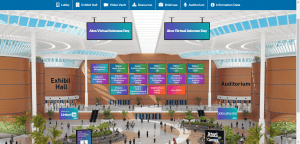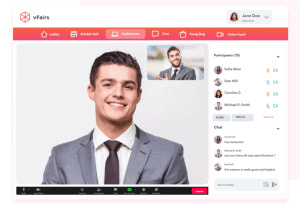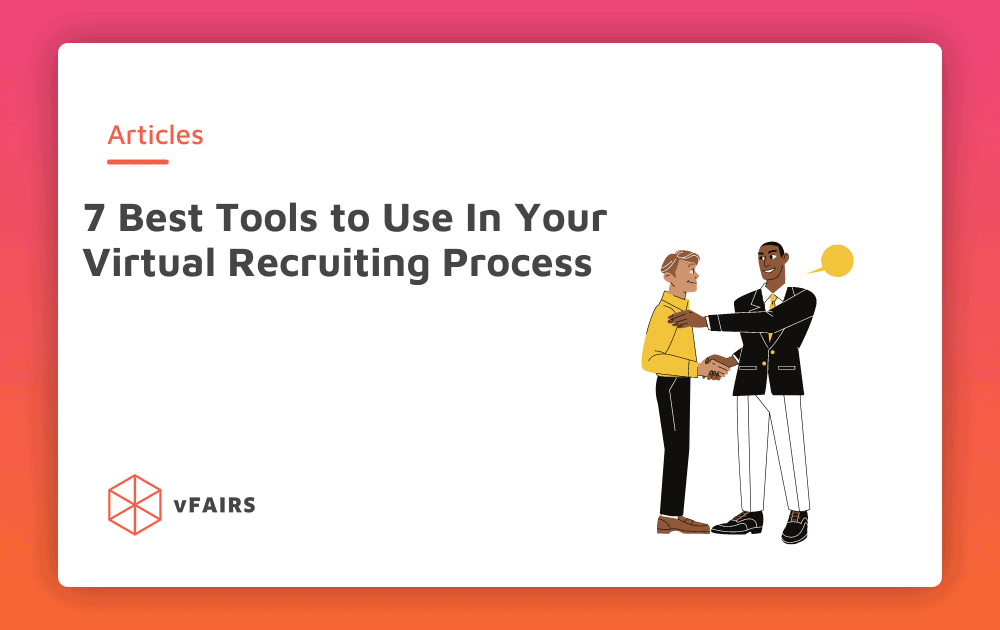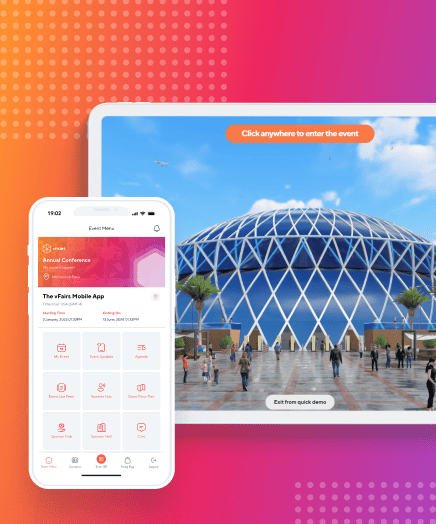As a general rule, the longer the hiring process takes, the more it is going to cost. It’s no wonder how complicated the recruiting process can get without complex and expensive tools. However, you can avoid these extensive costs by making smart choices about your recruiting tools.
We’ve compiled a list of internet tools that can help you locate a good fit for your next available position quicker and affordably. Yet, before we get into the heart of the matter, let’s go over some fundamentals.
What is an Online Hiring Process?
An online hiring process, that is productive, is a brick-by-brick procedure for recruiting new employees. In this process, a company assesses its talent criteria, hires from its pool of talent, and ultimately employs the best suitable applicants.
Many businesses use their own hiring processes. But the following are perhaps the most prevalent stages in the hiring process, irrespective of the size of the company.
What are the Steps in a Virtual Hiring Process?
Here is the list of typical steps taken during a hiring process:
- Assessing the recruitment criteria
- Organizing
- Formulating a hiring strategy
- Constructing a vacancy description
- Online advertising, publicizing, and promotion of the position
- Intake meeting with recruiters and hiring managers
- Online candidate verification
- Interviews
- Evaluation of the candidate
- Decision
- Reference check
- Position offer
- Final hiring
- Onboarding

What Does HR Do in the Hiring Process?
Human resources teams search the potential and share the ideal candidates (resumes, social profiles) with the hiring manager, letting them choose which ones they desire to be a part of the hiring process. Later on, HR does the main assessments to ensure all skill and academic criteria are satisfied.
HR must combine and take into account the remarks of colleagues from multiple departments. Once the best applicants have been selected, HR and the hiring manager or supervisor should conduct interviews with the applicants. The inquiries must be focused solely on the fundamental work tasks and functions, such as behavior or situational, and not on FYA (for your action).
7 Best Tools to Use for Virtual Hiring Process
It’s never been easier to hire virtually. Like most companies, this method works in tandem with other recruitment strategies.
Don’t be concerned if you’re considering virtual recruiting for a multitude of reasons. We’ve prepared a list of the best seven tools for your next virtual hiring process.
1. Virtual Recruiting Software
Recruiting virtually might be difficult at times, but with the appropriate software in place, it can be a simple procedure, even if the finalized employee is someone you’ve never met face to face.
Virtual event platforms are one way to collect applicant information at scale. This is done through registration and other user data. The companies can migrate this collected data to their applicant tracking systems. It comes with all the features you need to form virtual teams.
As everybody continues to work from different places, or checks into meetings from home, virtual meeting software becomes increasingly important. Many systems involve sharing your screen with the team to help in your presentations.
2. Virtual Recruiting Fair Platform
Virtual recruiting fairs help in many ways when it comes to the improved virtual hiring process. Virtual recruiting fairs help reach a larger pool of candidates. At the same time, they are best in offering multifunctional features to educate people about companies/open roles/application processes.
Some of the top multifunctional features include webinar, chatrooms, virtual meeting spaces, exhibit booths, etc. They also help in building a strong brand awareness and connect with job seekers in an environment that is built for success.

3. Cloud Storage
While coworkers revise a document and then send it around as a new file, it might be difficult to determine which one is the most up-to-date. Why not put it on an online drive, also known as cloud storage. So that everyone may view the same document at any moment?
Virtual event platforms, like vFairs, offer document hosting right within the event. It also comes with an option to link to other storage platforms such as:
- Google Drive
- OneDrive
- Dropbox
4. Video Interview Tools
Most people are familiar and comfortable with video interview tools by now. Free video conferencing platforms like Skype, Zoom or WebEx benefit interviewers and applicants alike by fostering remote meeting options. Additionally, functionalities like chat, file sharing and screen share within these platforms help to further enrich the interview experience.
5. Candidate Satisfaction Surveys
Developing applicant satisfaction surveys is an excellent approach to improve your hiring process and employer brand. Online survey tools such as Survey Monkey and Google Forms make it simple to collect this important information from applicants. In this manner, you may enhance the pace of your recruiting process even further.

6. Skill Testing Tools
Skill testing technologies like eSkill and Interview Mocha assist to evaluate candidates’ hard skills before they come in for interviews, allowing candidates to take technical skill tests at their own pace and guaranteeing that hiring managers don’t spend time with unsuitable applicants.
7. Background Check Tools
Background checks are a crucial part of the hiring process. Online background check solutions like HireRight and Checkr may be far faster than traditional background check services.
How Long Does the Hiring Process Take?
When it comes to determining how long the virtual hiring process takes, there is no single answer. This is because, depending on the type of position and sector, the time of the online hiring process differs from business to employee.
Employers, for example, often fill service positions like waiting tables in a week to ten days. On the other hand, universities typically fill professorship positions in a little over 60 days.
It is entirely dependent on how well all of the hiring stages are developed and executed. Furthermore, the software used for virtual recruitment has a significant influence on the overall process. This is due to the fact that the finest software will give you the best tools, and such tools make any task easier and quicker to complete.
Hiring Process Checklist
Right here, we have the checklist for a successful virtual hiring process:
Before the Hiring Process
- Determine if a new job or replacement is required
- Write position description
- Post job offer
- Decide salary range
During the Hiring Process
- Search for applicants
- Choose applicants
- Arrange interview schedules
- Contact applicants
- Interview applicants
- Prepare and send the offer letter
- Inform the rejected applicants
After the Hiring Process
- Onboarding schedule set up
- Employee action form completion by HR
- Onboarding paperwork completion by HR
- New hire reporting completion

Hiring Process Timeline
The online hiring process will definitely change from one firm to the next. Also, it is ultimately determined by the company’s needs and goals. However, regardless of your firm or sector, the recruiting process should adhere to certain fundamental principles.
We’ve created a basic yet tried-and-true schedule for a smooth and successful hiring process below.
Take Background Steps
Some stages are only available to companies contemplating a change in their approach to the initial applicant search. Perhaps you are thinking about employing professional recruiters for the first time?
You’ll need time to do your research and speak with them. However, because this is unlikely to be a recurring procedure, you won’t have to account for this type of process most of the time.
Determine an End Date
Do you require someone by a particular date? That makes it simple. How long do you estimate the process will take based on previous hires?
For most roles, most experts advocate a hiring timeframe of no more than a month to two months. Executive roles will inevitably take more time. Being prepared with a process plan can help you remain on track.
Decide When to Stop Searching
Applicants may be referred to you, or you may gather resumes online. You could use recruiters. Stopping the search, regardless of how you identify applicants, is a crucial timetable step.
Would you wait till you see five to ten resumes that pique your interest? Will you remove the post after a week? After you’ve received fifty applications?
Set a time restriction for accepting new candidates. This will, of course, be related to the caliber of the applicants you are interviewing.
Scheduling Interviews
Scheduling interviews may be challenging, especially if human resources isn’t your primary focus.
Panel interviews need considerably more planning. You may choose an ideal date range based on how many applicants you wish to interview. Make it plain to applicants that you prefer to operate within these constraints if at all feasible.
Candidates are less likely to make an attempt to meet your deadline if you imply that interview dates are extremely flexible.
Build In Some Time for Reviews
Proceeding through the online interview procedure without reviewing all of your information is pointless. Ensure your last interviews are no more than a couple of days before your desired “make an offer” date.
Wrapping Up
The online hiring process has the ability to change your recruitment plan by allowing you to screen and employ candidates from a distance. Not only that, but it also allows for a less expensive, faster, and more efficient hiring procedure. As a result, you are able to broaden your applicant pool more than ever before.
Interested in virtual recruiting events?
Schedule a vFairs Demo and We’ll Connect Shortly!


